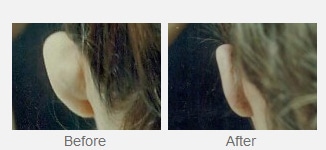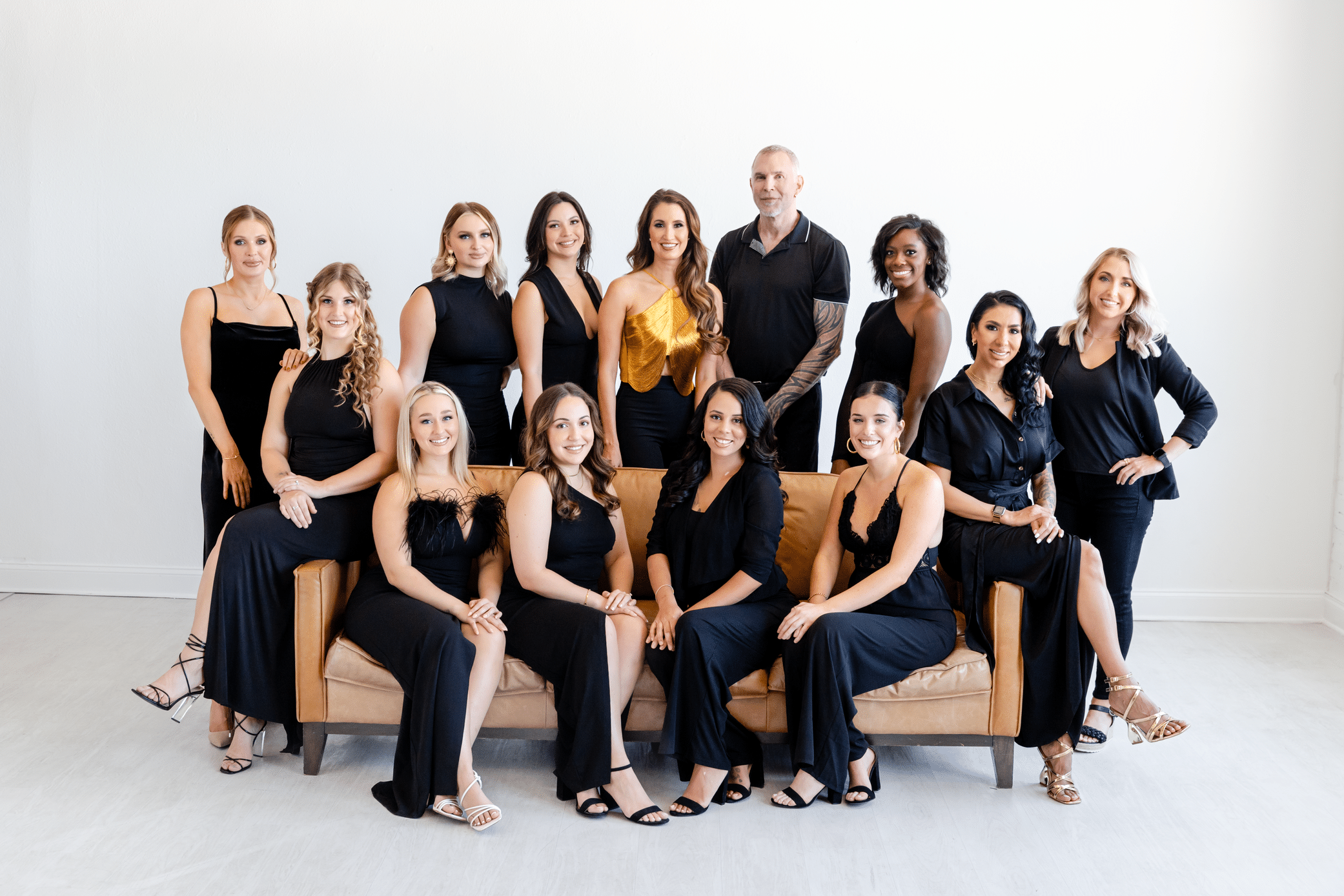If you or your child are self-conscious about the appearance of your ears, otoplasty—a specialized facial procedure—might be the solution. At the Plastic Surgery Center of Dallas, Dr. Rachel Walker, who trained at the renowned Wall Center for Plastic Surgery, offers expert, personalized care focusing on natural-looking results.
Dr. Walker customizes each facial procedure with her artistic and detail-oriented approach to meet your unique needs. Otoplasty can enhance your facial harmony and boost your confidence for cosmetic or medical reasons. Let our experienced team guide you through the process with care and precision.
What is an Otoplasty?
Otoplasty is a form of ear surgery performed to set disproportionately large or prominent ears into a more normal position. The objective of otoplasty is to create more natural and better-positioned ears. Since incisions are made in the back of the ears, the scars tend to be concealed in the creases.
This procedure helps reshape the outer ear and reduce protruding ears or abnormalities. For a successful procedure, a skilled and experienced surgeon must have the right eye to provide results you can be proud of. Dr. Rachel Walker at the Plastic Surgery Center of Dallas has vast experience and can help you obtain your desired cosmetic goals.
Benefits of Otoplasty
Otoplasty provides several significant benefits, both aesthetic and psychological. For many patients, the primary advantage is an improvement in self-confidence. Ears that protrude or are misshapen can lead to self-consciousness, especially in social or professional environments. Otoplasty offers a solution by improving the ear's appearance, allowing patients to feel more at ease and confident in how they look.
Additionally, otoplasty can improve facial harmony by bringing the ears into better proportion with the rest of the face. This can lead to a more balanced and pleasing overall appearance. For some patients, the surgery also offers functional benefits, such as correcting deformities that impact hearing or cause discomfort when wearing certain headgear.
How is An Otoplasty Performed?
There are several possible surgical approaches to otoplasty. Using a commonly employed technique, the surgeon makes incisions in the back of the ear and elevates the skin to expose the ear cartilage. Sutures may be used to hold the cartilage in position but sculpting techniques to cause accurate relaxation and rolling back of the cartilage may be more artistic and natural in appearance.

In some cases, a small wedge of cartilage needs to be removed during otoplasty. Afterward, the incisions are carefully closed with sutures. A firm, bulky dressing is applied to the ears and typically left in place for about a week to support the healing process. The ears can be quite sensitive, and it's normal to experience some soreness and discomfort, which can be managed with a few days of medication. Otoplasty is one of the most artistic procedures in plastic surgery, so it's important to choose a surgeon who enjoys the procedure and can also show you examples of high-quality results.
Long-Term Care Tips After Otoplasty Surgery
Proper long-term care after otoplasty is essential to maintain your results. Here's what you need to do:
- Attend Follow-Up Appointments: These ensure your ears heal as expected and allow your surgeon to address any concerns.
- Protect Your Ears: Avoid trauma, like contact sports, for a few months. Wearing a protective headband at night is also recommended.
- Use Sun Protection: Shield your ears from the sun with a hat or sunscreen to prevent discoloration and protect healing skin.
- Maintain a Healthy Lifestyle: Good nutrition and regular exercise support healing and help maintain your results.
- Monitor for Changes: If you notice any discomfort or changes in your ears, contact your surgeon promptly.
Following these tips will help preserve the aesthetic improvements from your otoplasty for years to come.
Candidates for Otoplasty

Otoplasty is a highly effective procedure for people who wish to improve the shape, size, or position of their ears. Ideal candidates include both children and adults who meet specific criteria. If you are considering this procedure, these factors can help determine if you are a candidate:
- Physical Health: You should be healthy and free from conditions that could impair healing or increase surgical risks.
- Prominent or Misshapen Ears: Otoplasty is commonly performed on individuals with ears that are noticeably protruding, asymmetrical, or irregularly shaped due to genetics or injury.
- Age Requirements: Children as young as five or six, whose ears have reached near-full development, are often suitable for otoplasty. Adults of any age can also benefit from the procedure.
- Emotional Readiness: It is important for candidates, particularly younger ones, to have a positive attitude about the surgery and realistic expectations for the results. For children, the decision to undergo otoplasty should be supported by parents and made in the child’s best interest.
- Desire for Improved Appearance: Candidates should seek otoplasty for their own personal reasons, such as improving self-confidence or comfort, rather than to satisfy others’ expectations.
A consultation with Dr. Walker is the best way to determine if otoplasty is right for you. During this meeting, she will look at your medical history, discuss your concerns, and detail the potential benefits and limitations of the procedure.
Frequently Asked Questions
When Is It A Good Time To Get Otoplasty Surgery?
Otoplasty can be performed at almost any age. The ears typically stop growing by age five, making this an ideal time for the surgery. Children may start noticing abnormal ear shapes at this age, making early intervention beneficial. However, otoplasty is also an excellent option for teenagers and adults who are unhappy with their ears' appearance, as it's never too late to improve self-esteem and confidence.
What Is The Recovery Time For Otoplasty?
After otoplasty, expect to take about a week off from school, work, and physical activities. A bandage will be wrapped around your head to protect the ears and reduce pressure during the initial healing phase. Choosing an experienced surgeon like Dr. Walker is crucial for ensuring the best possible results.
Are There Any Risks Associated With Otoplasty Surgery?
As with any surgery, otoplasty carries some risks, including infection, scarring, and changes in ear sensation. However, these risks are minimized when a skilled and experienced surgeon performs the procedure. Always discuss potential risks and concerns with your surgeon before the procedure.
Is otoplasty painful?
Otoplasty is generally not considered painful. Patients may experience some minor ear discomfort or tenderness after the procedure, which can be effectively managed with prescribed pain medication.
What types of anesthesia are used for otoplasty?
For children, general anesthesia is commonly used to ensure comfort during the procedure. Adults often undergo otoplasty with local anesthesia combined with sedation, though general anesthesia can also be an option.
Can otoplasty fix ears damaged by trauma or injury?
Yes, otoplasty can repair and reshape ears damaged by trauma, injury, or previous surgeries, restoring a natural appearance.
What is ear pinning?
Ear pinning is a common otoplasty technique to bring protruding ears closer to the head. This helps reduce the prominence of the ears and creates a more balanced facial appearance.
Will there be visible scars after otoplasty?
Scarring from otoplasty is minimal and typically hidden behind the ears. Over time, these scars fade and become nearly invisible.
Can otoplasty be combined with other procedures?
For a comprehensive transformation, otoplasty can be performed alongside other facial or cosmetic procedures, such as a facelift. Discuss your ideas with Dr. Walker during the consultation.
Is otoplasty permanent?
Yes, otoplasty results are generally long-lasting. Once the ears are reshaped or repositioned, they maintain their new appearance unless affected by significant trauma.
How should I prepare for otoplasty?
Preparation for otoplasty includes avoiding certain medications or supplements that can increase bleeding, arranging for post-surgery care, and following any specific instructions from your surgeon, such as stopping smoking and refraining from alcohol consumption.
What is the success rate of otoplasty?
Otoplasty has a very high success rate, with most patients achieving their desired results. Satisfaction is significantly enhanced when a skilled and experienced surgeon like Dr. Walker performs the procedure.
Why Choose Dr. Rachel Walker for Otoplasty?
Dr. Rachel Walker offers a premier cosmetic surgery experience, blending luxury with personalized care. With specialized training from a prestigious aesthetic surgery fellowship at The Wall Center for Plastic Surgery, Dr. Walker is known for her meticulous, artistic approach to creating natural-looking results. Her practice revolves around crafting individualized beauty plans that address each client's unique needs. From recommending the most effective cosmetic treatments to providing medical-grade skincare products, Dr. Walker ensures a comprehensive approach to enhancing your appearance and confidence.
Dr. Walker is supported by a highly skilled team, including laser specialist Paul Kraft, CLT, LSO, who brings extensive experience in plastic surgery and medical dermatology. Together, they offer cutting-edge treatments and unparalleled attention to detail, making Dr. Walker the ideal choice for achieving beautiful, balanced results through otoplasty.
Schedule an Ear Surgery Consultation in Dallas, TX
At the Plastic Surgery Center of Dallas, Dr. Walker and her dedicated team are dedicated to helping you reach your aesthetic goals through cutting-edge technology and customized care. If you're unhappy with the appearance of your ears, contact Dr. Rachel Walker today at (972) 661-5077 or fill out our online form to schedule a consultation.
Located in Dallas, TX, our team looks forward to meeting you and helping you start the journey to a happier and more confident you!





